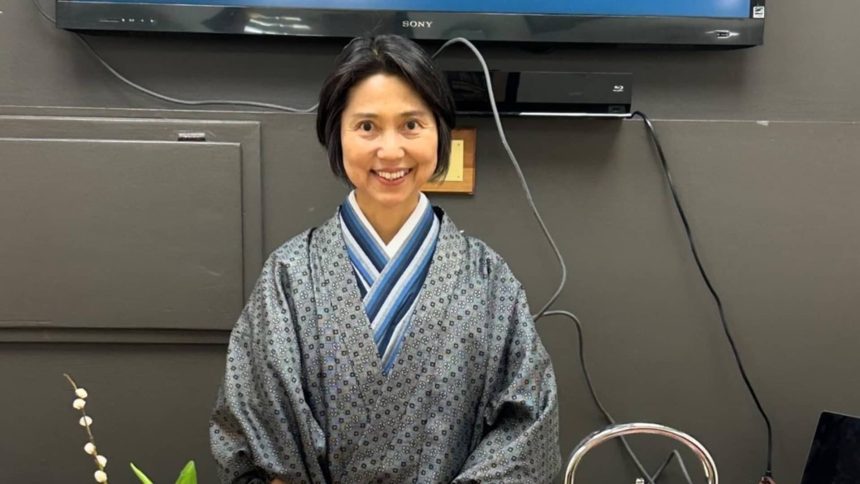Growing up in Nara, Japan, one food that was a constant in my home was tofu. It’s truly been a lifelong staple.
When I was a baby, once I could eat solids, my mom commonly prepared two dishes for me — one was a mix of tofu, rice porridge, sweet potato, kabocha (squash), and nori (seaweed) paste, and the other was miso soup with rice porridge.
I carried on that culinary tradition with my two kids when they were small. I never bought any ultra-processed baby food; instead I opted for tofu. It saved me time, money and stress, and it was a way for us to connect with our roots while living in the U.S.
DON’T MISS: How to master your money and grow your wealth
When we arrived here in 1994, tofu was harder to come by. If I could only find shelf-stabilized packaged versions, I kept about two dozen of them in the house at any given time. Even today, I always have several packs of tofu in my refrigerator.
In Japan, tofu is enjoyed by folks of all ages. My in-laws are 95 and 88 years old. They still live in Nara, and have tofu, natto (fermented soybeans) and miso soup every day. They attribute their longevity and immunity, in part, to that daily routine.
Here is why tofu is my No. 1 kitchen must-have.
1. It has a multitude of health benefits
Tofu is traditionally made from soybeans and nigari, the liquid that remains after removing the salt from seawater. In the U.S., calcium sulfate is often used as the main coagulant.
Either way, tofu contains all the essential amino acids that meat, poultry, eggs, fish and dairy do — but without cholesterol, since it is plant based.
Grilled tofu with nori flakes.
Photo: Michiko Tomioka
2. It’s economically and environmentally friendly
It takes 70.6 kilograms of greenhouse emissions to produce just one kilogram of beef, but only 3.2 kilograms of emissions to produce the same amount of tofu.
One of my latest recipes, a tofu cabbage roll.
Photo: Michiko Tomioka
I typically purchase 14 ounces of organic tofu for $2 or $3, which is often much less than the same amount of poultry or beef would cost me at the grocery store.
To me, it is simple math. In the course of the week, if you were to swap out one or two beef burgers for a tofu burgers, you would feel better, pay less for groceries and do something small to help the environment.
3. It is delicious and versatile
Tofu has a very natural, subtle flavor, so it can be matched with just about any cuisine or dish. Since it’s soft, you can also prepare it without a knife and cutting board.
As a nutritionist and cooking instructor, I am always developing new recipes, and tofu makes it very easy to experiment.
I serve tofu in a variety of ways: pan-fried or in soups and salads, in nimono (slow cooked roots and veggies), dumplings, veggie pancakes, vegan curry, burgers, cabbage rolls, mochi and ice cream, to name a few.
A delicious tofu chocolate pudding.
Photo: Michiko Tomioka
My go-to lunch is a tofu miso soup with seasonal roots and leafy vegetables, seaweed, ginger and goji berries. Generally, I make a large pot and return to it throughout the week, serving it with multigrain rice, natto and nukazuke (pickles).
My other perfect, simple meal is hiyayakko. It is cold tofu — usually the silken or soft variety — topped with nori, sesame seeds, ginger, shiso, scallions, natto and a little bit of soy sauce. If you prefer it warm, you can always pop it into the microwave for one to two minutes and then add your toppings.
I often call tofu my best friend for happy living. I hope you are inspired to incorporate it into your kitchen, too.
Michiko Tomioka, MBA, RDN, is a certified nutritionist and longevity expert. Born and raised in Nara, Japan, her approach focuses on a plant-based diet. She has worked in nutritional roles at substance recovery centers, charter schools and food banks. Follow her on Instagram @michian_rd.
Want to master your money this fall? Sign up for CNBC’s new online course. We’ll teach you practical strategies to hack your budget, reduce your debt, and grow your wealth. Start today to feel more confident and successful. Use code EARLYBIRD for an introductory discount of 30% off, now extended through September 30, 2024, for the back-to-school season.
Read the full article here




